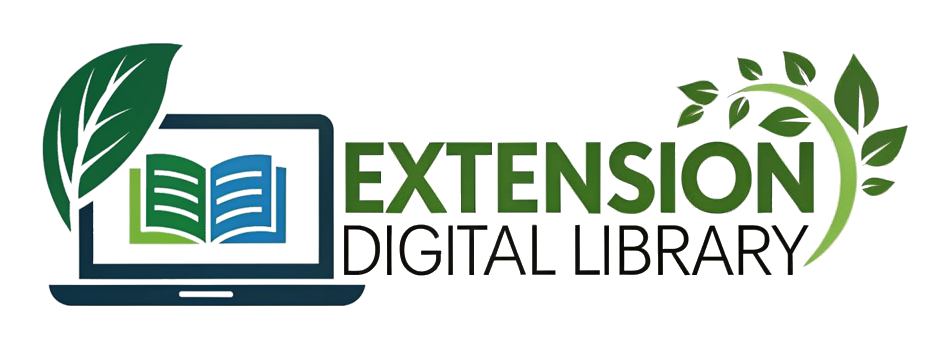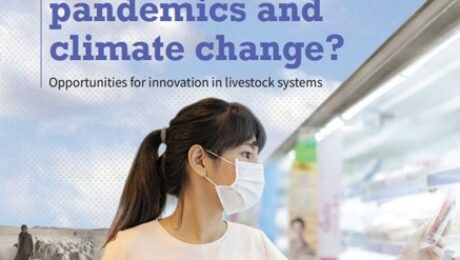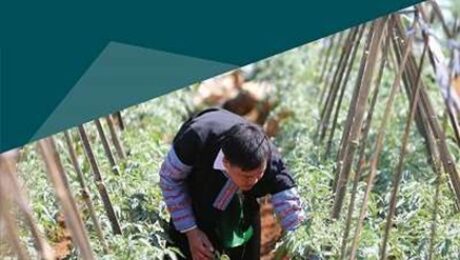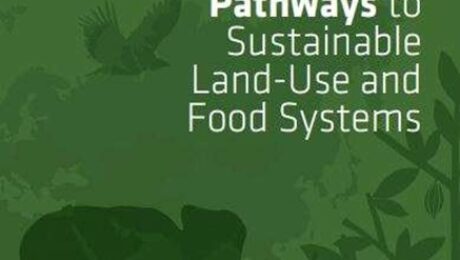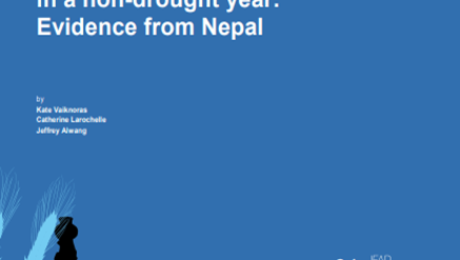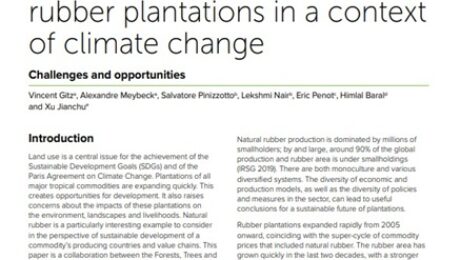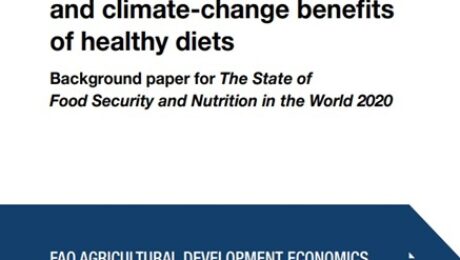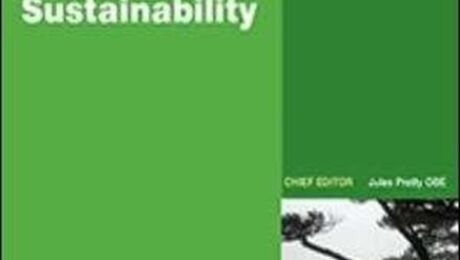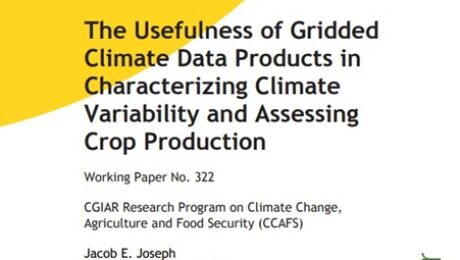How to feed the world in times of pandemics and climate change?
In this brief, the four questions posed by the GFFA are addressed from the perspective of livestock systems. The crucible of COVID-19 is an opportunity to acknowledge vulnerabilities in order to “build back better” by applying the lessons learned from emergency and rehabilitation activities of past zoonotic disease outbreaks and natural disasters. This means investing in sustainable, inclusive, and resilient food systems for better production, better nutrition, a better environment, and better lives.
- Published in CLIMATE CHANGE
Adaptation Gap Report 2020
The fifth edition of the UNEP Adaptation Gap Report looks at progress in planning for, financing and implementing adaptation – with a focus on nature-based solutions.
The UNEP Adaptation Gap Report 2020 finds that while nations have advanced in planning, huge gaps remain in finance for developing countries and bringing adaptation projects to the stage where they bring real protection against climate impacts such as droughts, floods and sea-level rise.
Public and private finance for adaptation must be stepped up urgently, along with faster implementation. Nature-based solutions – locally appropriate actions that address societal challenges, such as climate change, and provide human well-being and biodiversity benefits by protecting, sustainably managing and restoring natural or modified ecosystems – must also become a priority.
- Published in CLIMATE CHANGE
Rural adaptation to climate change
The research found that some farmers were responding to climate change mostly by adopting changes in farm management practices, and that the incentive for farmers to act was influenced by the policy environment, the institutional environment and investment by governments. Because planned and institutional measures are in the hands of various levels of government, the research reinforced the importance of coordination to develop a cohesive package of measures for farmers to address climate change at the farm level.
Understanding farmers’ adaptation strategies and decision-making processes is important for designing future policy interventions to ameliorate and prevent the adverse effects of extreme weather events on farming systems. This technical report presents the findings of an ACIAR project that examined the effects and potential benefits of responses to climate change in rice markets in China and Vietnam. The project provided a social sciences dimension to the study of climate change and its primary objectives were to identify those farmers most at risk from climate change and then to identify policy responses to assist their adaptation and adjustment.
- Published in CLIMATE CHANGE
Pathways to Sustainable Land-Use and Food Systems
The Food, Agriculture, Biodiversity, Land-Use, and Energy (FABLE) Consortium is convened as part of the Food and Land Use Coalition (FOLU). It is led by the International Institute for Applied Systems Analysis (IIASA) and the UN Sustainable Development Solutions Network (SDSN), working closely with EAT, Bioversity International, the Potsdam Institute for Climate Impact Research (PIK), and many other institutions. This report was jointly prepared by the members of the FABLE Consortium
- Published in CLIMATE CHANGE
Missing in Action: Experiences of women with climate journalism
This booklet narrates the stories of five female journalists from Pakistan who are working on environment- and climate-change-related issues. Women are being disproportionately and adversely impacted by climate change and female journalists are uniquely placed to understand and share their stories. However, these journalists are ‘missing in action’ from the media in sharing their experiences of environmental activism and climate action. The publication covers a range of challenges journalists face, from limitations on mobility and harassment, to gender-based discrimination in media houses. It highlights why environmental issues sometimes make headlines while remaining dormant at others.
- Published in CLIMATE CHANGE
How the adoption of drought-tolerant rice varieties impacts households in a non-drought year: Evidence from Nepal
Stress-tolerant rice varieties (STRVs) are bred to be high yielding and tolerant to climate shocks such as drought. In Nepal, several drought-tolerant STRVs have been released and widely adopted. This paper estimates the impacts of the adoption of STRVs on first- and higher-order household outcomes in a non-drought year. It controls for selection bias using correlated random effects models to eliminate unobserved plot and household-level heterogeneity. STRVs have a higher yield, a lower yield variance and a shorter growing duration than traditional landrace varieties. In addition, households apply more early-season chemical fertilizer and land preparation labour to plots planted to STRVs compared to landraces. This indicates that the first-order impacts of the adoption of STRVs induce behavioural changes that help to modernize agricultural practices. Finally, this study conducts a randomized experiment in which half of the sampled households provided additional detail on their agricultural inputs.
- Published in CLIMATE CHANGE
Sustainable development of rubber plantations in a context of climate change
Land use is a central issue for the achievement of the Sustainable Development Goals (SDGs) and of the Paris Agreement on Climate Change. Plantations of all major tropical commodities are expanding quickly. This creates opportunities for development. It also raises concerns about the impacts of these plantations on the environment, landscapes and livelihoods. Natural rubber is a particularly interesting example to consider in the perspective of sustainable development of a commodity’s producing countries and value chains. This paper is a collaboration between the Forests, Trees and Agroforestry (FTA) research program of the CGIAR (FTA n.d.) and the International Rubber Study Group (IRSG) (IRSG n.d.). FTA works across a range of plantations, value chains and tree crop commodities, from timber, palm oil, cacao, coffee and tea to bamboo, rattan and rubber, among others. It has identified plantations, their development and sustainability as a research priority. IRSG is an intergovernmental organization and the primary source of statistical information related to rubber value chains, policy issues, innovation and technology. IRSG has a leading role in developing a comprehensive agenda for the sustainability of natural and synthetic rubber.
- Published in CLIMATE CHANGE
Valuation of the health and climate-change benefits of healthy diets
The health and environmental consequences of our dietary choices impose costs on society that are currently not reflected in the price of those foods or diets that contribute to these detrimental impacts. This paper provides updated estimates of two major cost items: the healthcare-related costs associated with unhealthy diets, and the climate-change costs associated with the emissions attributable to diets and food production. Results suggest that the health and climate-change costs of current diets are substantial and projected to increase up to 1.3-1.7 trillion USD annually by 2030.
- Published in CLIMATE CHANGE
The Top 100 questions for the sustainable intensification of agriculture in India’s rainfed drylands
India has the largest area of rainfed dryland agriculture globally, with a variety of distinct types of farming systems producing most of its coarse cereals, food legumes, minor millets, and large amounts of livestock. All these are vital for national and regional food and nutritional security. Yet, the rainfed drylands have been relatively neglected in mainstream agricultural and rural development policy. As a result, significant social-ecological challenges overlap in these landscapes: endemic poverty, malnutrition and land degradation. Sustainable intensification of dryland agriculture is essential for helping to address these challenges, particularly in the context of accelerating climate change. In this paper, we present 100 questions that point to the most important knowledge gaps and research priorities. If addressed, these would facilitate and inform sustainable intensification in Indian rainfed drylands, leading to improved agricultural production and enhanced ecosystem services. The horizon scanning method used to produce these questions brought together experts and practitioners involved in a broad range of disciplines and sectors. This exercise resulted in a consolidated set of questions covering the agricultural drylands, organized into 13 themes. Together, these represent a collective programme for new cross- and multi-disciplinary research on sustainable intensification in the Indian rainfed drylands.
- Published in CLIMATE CHANGE
The Usefulness of Gridded Climate Data Products in Characterizing Climate Variability and Assessing Crop Production
A sparse rain gauge network in dryland regions has been a major challenge for accessing high-quality observed data needed to understand variability and trends in climate. Gridded estimates of weather parameters produced through data assimilation algorithms that integrate satellite and irregularly distributed on-ground observations from multiple observing networks are a potential alternative. Questions remain about the application of such climate data sources for assessing climate variability and crop productivity. This study assessed the usefulness and limitations of gridded data from four different sources i.e. AgMERRA, CHIRPS, NASA Power, and TAMSAT in estimating climate impacts on crop productivity using Agricultural Production Systems Simulator (APSIM). The study used data for 11 locations from Africa and India. The agreement between these data sets and observed data both in the amount and distribution of rainfall was evaluated before and after bias correction statistically. A deviation of more than 100 mm per season was observed in 13%, 20%, 25%, and 40% of the seasons in CHIRPS, AgMERRA, NASA Power, and TAMSAT data sets respectively. The differences were reduced significantly when data sets were bias-corrected. The number of rainy days is better estimated by TAMSAT and CHIRPS with a deviation of 4% and 6% respectively while AgMERRA and NASA Power overestimated by 28% and 67% respectively. The influence of these differences on crop growth and productivity was estimated by simulating maize yields with APSIM. Simulated crop yields with all gridded data sets were poorly correlated with observed data. The normalized root-mean-square error (NRMSE) of maize yield simulated with observed and gridded data was <30% for two locations in the case of AgMERRA and CHIRPS and three locations in the case of NASA Power. The NRMSE was > 30% for all locations with TAMSAT data. When yields were simulated with data after bias correction using the linear scaling technique, results were slightly improved. The results of our study thus indicate that the gridded data sets are usefully applied for characterizing climate variability, i.e. trends and seasonality in rainfall, however their use in driving crop model simulations of smallholder farm level production should be carefully interpreted.
- Published in CLIMATE CHANGE
